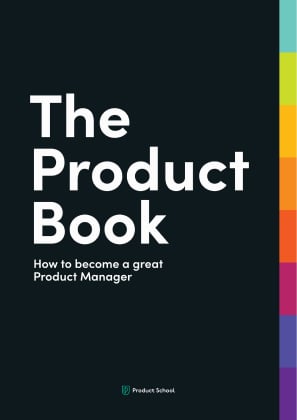Updated: December 3, 2025- 19 min read
Product management has become one of the most talked-about careers in tech. The idea of being at the forefront of shaping products that impact millions — and getting paid well to do it—sounds pretty enticing, right?
There are also a few things that need to be clarified about what a Product Manager's career path really looks like. It's often seen as this glamorous role where you get to be the “CEO of the product,” leading teams and making big decisions.
In reality, it involves balancing competing priorities, navigating ambiguity, and working through the nitty-gritty with engineering, design, and stakeholders. It gets tricky, to say the least, since you don’t have direct authority over any of these teams. Can you see why ‘the CEO’ label feels kind of misplaced?
However, with the right mindset, proper guidance, and a clear understanding of what to expect at each stage, you can absolutely thrive in any Product Management position. In this article, we'll break down the typical Product Manager career path, the progression, and how to know when you’re ready to move up to the next level.

Is Product Management a Good Career for Everyone?
Julia Austin, a senior lecturer at Harvard Business School and an executive coach to early-stage companies, said:
The best PMs I have worked with have mastered the core competencies, have a high EQ, and work for the right company for them.
She also points out they’re neither the CEOs nor the grand visionaries — at least not on a full-time basis. They are simply the individuals who have mastered the three factors across all Product Management levels we're about to explore.

Core Product Management Competencies
The best PMs are skilled in conducting customer interviews, running design sprints, and prioritizing features. They can translate business needs into technical requirements and effectively track product metrics. Mastering these competencies allows PMs to make informed decisions.
Emotional Intelligence Makes a Great Product Management Career
A high EQ sets great PMs apart. It means they can empathize with customers, build strong relationships with stakeholders, and navigate complex dynamics. A PM with a high EQ knows how to keep the team motivated and handle conflicts gracefully, all while staying tuned into the nuances of customer feedback and internal stakeholder needs.
Product Manager-Company Fit
Even with the right skills and EQ, company fit is crucial. PMs thrive when they work for a company that aligns with their values and approach to Product Management. The company’s size, culture, and philosophy about Product Development significantly impact a PM's effectiveness and job satisfaction. Finding the right fit ensures they can truly excel in their role.
The 6 Steps on Your Product Management Career Path: Tips & Tricks
1. Starting Your Career in Product Management
Breaking into Product Management often begins with gaining a solid foundation in related fields. These include marketing, design, project management, software engineering, or business analysis. If a good opportunity opens up and seems like it would allow you to transition into Product Management, use it.
If you're just starting out, focus on building a versatile skill set that includes understanding market trends, basic Product Experience and Product Design principles, and how to communicate effectively with cross-functional teams.
Explore related roles. Take on roles that allow you to work closely with product teams. Marketing roles give insights into customer needs, while engineering positions help you understand the technical side of product development. Project Management roles on the other hand give you nearly a complete insight into the execution of projects which is something you’ll need to understand as PM.
Seek Certifications and Knowledge. Consider obtaining a certification in Product Management or taking specialized courses to understand the core principles of the role.
Build your own projects. Explore side hustles where you can practice the basics of Product Management — defining a problem, creating a solution, and iterating based on feedback.
Network and Seek Mentorship. Actively connect with Senior Product Managers through industry events, online communities, or within your own organization. A mentor can provide valuable guidance, feedback, and support. This will help you navigate the complexities of the role and avoid common pitfalls.
Start with Data. Whether you’re in a junior or more advanced role, as a PM, it’s good to understand the data and always ground your decisions in it. Practice using analytics tools to track user behavior and gather insights. This habit will not only improve your products but also showcase your ability to make informed, strategic decisions.
2. Product Management Career Ladder to an Associate Product Manager Role
After working as a software engineer for a decade, I decided to transition into Product Management. My interest in understanding the "why" behind building features and software products, combined with a passion for digging deeper into how our products solved customer problems, led me to this decision.
— Deepthi Jayarajan, Product Leader at Zoom, in How to Become a Product Manager
Once you have some experience in a related field, you can look for opportunities to step into an Associate Product Manager role. The job market is dynamic and always active — it may be best always to keep an eye on the opportunities and set alerts for your desired job positions. It’s better to play on the long haul, see where opportunities present themselves, and stay ready to react.
At this stage, your focus will be on learning the ropes, supporting senior PMs, and getting hands-on experience with the product development process.
Volunteer for Cross-Functional Projects: If you’re currently in a different role, offer to help with projects that involve product development. This could be anything from helping to gather user feedback to assisting in building a Product Launch plan. It's a hands-on way to understand the product lifecycle and make connections with the product team.
Learn the Tools of the Trade: Get familiar with Product Management tools like Jira, Trello, and analytics platforms that most companies use. Hands-on knowledge of these tools shows that you’re ready to jump into a junior PM role without needing extensive training.
Develop a Portfolio: Create a portfolio that showcases your work related to Product Management. Include case studies of any side projects, volunteer experiences, or contributions to product teams. Highlight your process, from problem identification to solution delivery.
Take on Small PM Tasks: Within your current job, look for opportunities to take on small PM tasks, like conducting user interviews or assisting with sprint planning. This will help you build relevant experience and demonstrate your initiative to hiring managers.
3. Moving Up to Product Manager

Transitioning from a junior to a mid-level Product Manager is often one of the most challenging steps in a PM's career — out of the frying pan and into the fire.
As an AssociatePM, you're focused on learning the basics and supporting more experienced peers. But to move up to the next level, you need to show that you can take on more responsibility. What’s more, you want to show that you’re able to think strategically about the product, regardless of whether that’s yet your responsibility.
This step involves not just executing tasks but also demonstrating leadership, ownership, and a deeper understanding of how your product fits into the market and the company's goals.
Take Ownership of a Feature or Product Area: Start by taking the initiative to own a smaller feature or a specific aspect of the product. Show that you can drive this area from concept to launch, making data-driven decisions along the way. For example, if you’re handling a new onboarding flow, be the point person for its entire lifecycle—research, design, development, testing, and iteration. Demonstrating your ability to take full ownership is key to moving up.
Develop Strong Prioritization Skills: Mid-level PMs are expected to balance customer needs, business goals, and technical constraints. Begin practicing this by getting involved in backlog refinement and sprint planning. Show that you can make tough calls on what features or enhancements should be prioritized based on impact and feasibility. When you can articulate why certain features should be prioritized — and back it up with data — you’re showing you’re ready for a bigger role.
Deepen Your User Understanding: To progress, you need to move beyond internal team coordination and start focusing on market dynamics and user behavior. Engage in market research, competitor analysis, and user research. Understand not just what users want but also the broader market trends and competitive landscape. Being able to strategically position your product and adapt to market changes will set you apart as someone ready for a full PM role.
Improve Cross-Functional Leadership: Junior PMs often work under the guidance of more senior PMs. To move up, you need to step into a leadership role within your cross-functional team. This means leading meetings, aligning teams around a common goal, and resolving conflicts between departments like engineering, design, and marketing.
Own Metrics and Outcomes: Start taking responsibility for key metrics related to your feature or product area. Track KPIs such as user engagement, retention, or revenue impact. When things don’t go as planned, run the Product Analysis to understand why and iterate accordingly. Demonstrating that you can own not just the execution but also the outcomes is critical to showing you’re ready to manage a product more holistically.
Understand Your Team Dynamics: Some recommend building a case for your progression, and that can work — but its success depends on your team's culture. As a Product Manager, it's crucial to read the room. Observe how your superiors prefer to communicate and adapt. If they value humility over self-promotion, then follow suit. This approach not only aids in your move to a mid-level role but also sharpens the leadership skills you'll need to manage a team effectively.
4. Product Management Career Progression With Specialization
Specializing in Product Management is a pivotal career step. It's about moving from a generalist role to a focused area like Technical Product Management, Growth, or UX. This is where you can choose your specialty and carve your path toward mastery.
Specialization allows you to refine your skills, increase your impact, and open up new career opportunities. Here’s how to make that transition effectively:
Identify Your Niche: Choose a specialization that matches your interests and skills. Whether it's Technical Product Management, Growth, Digital, Data, AI, Product Marketing, or Product Design, immerse yourself in that area through courses, certifications, and, of course, hands-on projects.
Adopt a Specialist Mindset: Shift from juggling various aspects of Product Management to honing a focused set of responsibilities. For instance, as a Growth PM, you would concentrate on metrics like user acquisition and retention, using a more analytical approach.
Build Cross-Functional Relationships: Develop strong connections with teams specific to your specialization. As a Data PM, for instance, you’d work closely with data scientists and engineers, learning to translate complex data into actionable product strategies.
Own Specific Metrics: Take responsibility for key metrics related to your specialization. For a Technical PM, focus on system performance or API adoption. Run experiments and iterate to meet targets, demonstrating your expertise.
Maintain a Broader Perspective: While diving deep into your niche, keep an eye on the overall Product Vision. Ensure that your specialized work aligns with the product’s business objectives and contributes to the broader strategy.
5. Growing into a Senior Product Manager
Transitioning from a mid-level Product Manager to a Senior Product Manager is a significant step up — it comes with a new set of challenges. As a mid-level PM, you’ve been focused on owning a product or feature area, prioritizing tasks, and making data-driven decisions.
If your Product Management career goal is moving into a senior role that means you’ll shift from day-to-day execution to a more strategic, leadership-focused position. You’re now expected to influence the product vision on a larger scale and guide both products and people. Here’s how to transition as smoothly as possible:
Think Beyond the Product: As a Senior Product Manager, you're not just responsible for a single product or feature; you're thinking about the broader Product Portfolio and how it aligns with the product's long-term strategy. Start practicing this by getting involved in discussions about the overall Product Roadmap. Provide insights into how your product fits into the bigger picture and how it can support larger business goals like market expansion, revenue growth, or customer retention.
Mentorship and Team Development: Unlike in your mid-level role, where your focus was primarily on product outcomes, as a Senior PM, you’re also in a position to guide junior team members. Take the initiative to mentor junior PMs. Offer them guidance on how to tackle product challenges and make strategic decisions. This mentorship demonstrates your leadership skills and shows that you can shape and lead a product team, which is crucial if you want to transition from the individual contributor track to management.
Drive Cross-Departmental Strategy: Moving to a senior role means you’ll have to work more closely with other departments like sales, marketing, and customer support. You’re not just gathering input from these teams—you’re actively collaborating to align the Product Strategy with the company's goals. This involves not only understanding the technical side but also product positioning, pricing strategies, and go-to-market plans. Show that you can bring these departments together, ensuring everyone is on the same page regarding the product direction.
Take on High-Impact Projects: As a Senior PM, you’re expected to tackle more complex, high-impact projects that can significantly affect the company's trajectory. Start by volunteering to lead more challenging initiatives, such as planning a new Product Launch or entering a new market segment. This Product Management experience will prepare you for the type of strategic decision-making and risk management that comes with a senior role.
Master Advanced Analytics and Market Insights: While mid-level PMs focus on tracking product metrics and user feedback, Senior PMs need to dive deeper into advanced product analytics and market research. This means understanding market trends, competitive landscapes, and long-term user behavior patterns. Senior PMs should be able to use this data to identify new opportunities or pivots for the product. They should be well-prepared to present these insights to stakeholders. Your ability to interpret complex data and turn it into actionable strategies is key to your success as a Senior PM.
Influence Without Authority: One of the biggest shifts at this level is learning to influence others without having direct authority. You’ll need to lead cross-functional teams, negotiate with stakeholders, and sometimes push back on leadership when it's in the best interest of the product. To prepare for this, practice active listening and learn how to communicate a compelling vision that aligns with both the product and company goals. Being able to rally the team and stakeholders around a shared vision is what sets a Senior PM apart.
6. Stepping into Product Leadership Roles
Moving into product leadership roles like Director of Product, Principal Product Manager, or Chief Product Officer (CPO) is a major leap. At this level, you're not just managing a product—you’re shaping the entire product organization's direction and aligning it with the company's strategic goals.

Success in this PM to PL transition requires a blend of vision, strategic thinking, and strong leadership skills. Here’s how to navigate this transition and thrive in a product leadership role:
Develop a Strategic Vision: As a Product Leader, you need to define an overarching product vision that aligns with the company's mission and market needs. Deepen your already existing understanding of the market landscape, user needs, and competitive positioning. Use this knowledge to craft a compelling vision that not only guides the product teams but also resonates with the company’s broader strategy. Regularly communicate this vision across teams to ensure everyone is working towards the same goal.
Build and Empower Your Team: Leadership is about building a high-performing team of Product Managers and empowering them to succeed. Focus on hiring diverse talent with complementary skills and invest in their growth. Conduct regular one-on-ones, provide constructive feedback, and create opportunities for professional development. Foster a collaborative culture where PMs feel supported and valued, encouraging them to take ownership of their products. Your role is to be a coach and mentor—set clear expectations, but give your team the autonomy to make decisions and learn from their experiences.
Drive Cross-Functional Alignment: At this level, you're working closely with other executive leaders—like the CTO, CMO, and CFO—to integrate product strategy into the overall business strategy. This requires building strong relationships and fostering open communication. Regularly meet with these leaders to understand their priorities and challenges, and ensure that product plans align with business goals such as revenue growth, customer satisfaction, and market expansion. It's about breaking down silos and ensuring all departments work in unison to drive the company forward. Being an effective product leader means not only having a seat at the table but also actively steering the discussion towards a unified vision.
Master Stakeholder Management: As a product leader, you'll be dealing with a wide array of stakeholders, from the executive team to customers and investors. Learn to manage their expectations by being transparent about product plans, timelines, and trade-offs. Clearly communicate the reasoning behind strategic decisions and be open to feedback. Develop the ability to tell a compelling story about your product strategy that aligns with the company's goals and market realities. Remember, you won't always have consensus, but your role is to make informed decisions and bring stakeholders along on the journey.
Be Adaptable and Forward-Thinking: The product landscape is constantly evolving, and as a leader, you need to anticipate changes and adapt your strategy accordingly. Stay ahead of industry trends, emerging technologies, and shifts in customer behavior. Encourage a culture of experimentation within your team to explore new opportunities and innovate. Being forward-thinking doesn't just mean reacting to changes—it means proactively positioning your product organization to seize new opportunities and navigate challenges before they arise.
Key Takeaways for Each Stage
Starting out: Focus on learning and building foundational skills.
Associate PM: Absorb as much as you can from senior PMs and start contributing to the product’s success.
Product Manager: Own the product roadmap, balance priorities, and drive the product to success.
Senior PM: Think strategically, mentor others, and influence the product direction at a high level.
Product Leader: Shape the product organization, define long-term strategy, and lead a team toward a shared vision.
Throughout each stage of this career path, the key is to continuously learn, adapt, and focus on both user needs and business objectives. This progression isn't just about climbing the ladder—it's about evolving your mindset from building features to building a vision.
Product Manager Career Path and Salary
When exploring Product Management career progression, understanding the salary landscape can help you gauge your potential earning capacity. In this post, we break down the entry-level, average, and highest salaries from Indeed for various Product Management roles, from Associate Product Manager to Principal Product Manager, across the United States. We also highlight the top-paying cities for each role.
Associate Product Manager Salary
An Associate Product Manager is typically at the beginning of their Product Management career. Here’s a breakdown of their salary:
Entry Level Salary: $40,907
Average Base Salary: $84,599
Highest Salary Range: $174,958
The highest-paying cities for Associate Product Managers are:
Sandy, UT - An impressive $143,640 per year,
Tysons Corner, VA - $86,621 per year.
Denver, CO - $81,931 per year.
These figures suggest that even at an early stage, Associate Product Managers can secure competitive compensation, particularly in cities with a strong tech presence.
Product Manager Salary
Product Managers often have a few years of experience and are responsible for leading product initiatives. Their salary can vary significantly based on their experience, location, and company size:
Entry Level Salary: $75,676
Average Base Salary: $120,872
Highest Salary Range: $193,059
Top cities where Product Managers earn the most include:
Seattle, WA - With an average salary of $140,942, Seattle is a hotspot for Product Managers.
Austin, TX - $133,272 per year.
New York, NY - $132,884 per year.
These cities are known for their vibrant tech scenes, offering ample opportunities for Product Managers to thrive.
Senior Product Manager Salary
Senior Product Managers take on more complex projects and lead cross-functional teams. Their compensation reflects this higher level of responsibility:
Entry Level Salary: $109,100
Average Base Salary: $152,781
Highest Salary Range: $213,952
The highest-paying cities for Senior Product Managers are:
San Jose, CA - A remarkable $183,859 per year, reflecting the region's competitive market.
San Francisco, CA - $179,253 per year.
Concord, CA - $164,945 per year.
The California Bay Area is a key hub for senior roles, offering some of the most lucrative opportunities in Product Management.
Vice President of Product Salary
The Vice President of Product is a senior leader who drives product strategy and oversees product teams. Their salaries reflect the high level of responsibility and expertise required for this role:
Entry Level Salary: $110,007
Average Base Salary: $178,944
Highest Salary Range: $291,083
Top cities offering the highest salaries for the Vice President of Product include:
Tampa, FL - Leading with $261,313 per year.
Chicago, IL - $239,018 per year.
Greenwood Village, CO - $231,703 per year.
San Francisco, CA - $231,122 per year.
San Diego, CA - $227,515 per year.
Vice Presidents of Product are crucial for guiding product strategy and ensuring successful product launches. This strategic leadership role is especially well-compensated in cities with a strong tech presence, reflecting the high demand for experienced product visionaries.
Charting Your Next Product Management Career Move
Every step, whether it's building foundational skills as an Associate Product Manager or navigating leadership, is an opportunity to grow and shape not just products but your own career.
So, what will you do next? Will you dive deeper into your current role and seek opportunities to own projects and make a tangible impact? Will you pivot towards a specialization? Maybe you are ready to step up, guiding not just products but entire teams.
Remember, the Product Manager career path is as much about your mindset as it is about milestones. It's about adapting, learning, and leading — whether you’re managing your first product or shaping a portfolio of them. The market's ever-changing, and so should you. Embrace the challenges, seek out mentors, take risks, and above all, keep your focus on creating value—not just for the users but for the teams and companies you’ll lead.
Product Management Certification
Master the essential PM toolkit: build roadmaps, define PRDs, analyze users, and launch products leveraging the latest AI-first strategies.
Enroll now
Updated: December 3, 2025





